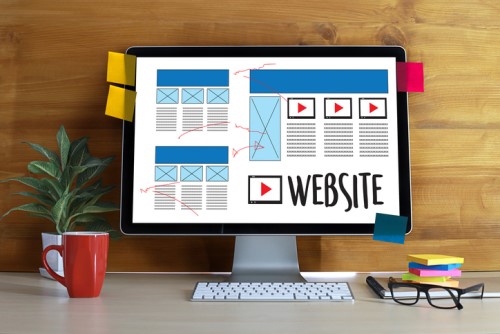

“Elements are the building blocks of life – and successful websites,” says Steven Gibbons. “With so many options, it’s hard to know which you should use for your insurance agency.”
A website is often a customer’s first introduction to a business, so having one that is captivating and easy to navigate is critical in attracting clients. To make sure your agency website ticks all the boxes, Gibbons, website coordinator and content specialist at Insurance Technologies Corporation (ITC), shares with IBA the six elements every website should incorporate for continued success.
Call to action
A call to action is one of the most important aspects of a website’s design, and it can come in many forms but all with the same goal: engage visitors to become customers.
“Do this with a button, a direct form, a questioning prompt, or anything to drive an action,” shares Gibbons. “Bigger is not always better, though. Something too obnoxious will overwhelm or drive away visitors. Keeping a good balance is essential.”
Content
Don’t muddle a website with unnecessary content. Take the time to understand what visitors are looking for and customize content to fit target demographics and areas.
“The adage rings true: Content is king. Ensure the content of your website is understandable and relevant to your audience,” says Gibbons.
Navigation
As Gibbons explains, people are more receptive to certain presentations of information. While some website visitors might go to the main navigation menu to get information, you can’t assume all will. Offering varied styles of navigation allows a visitor to find one that fits their preference.
Eye catch
What’s an eye catch? According to Gibbons, an eye catch is an element designed to draw attention and make a statement, and you can use it in tangent with a strong call to action to make an impression and drive action.
“The eye catch can be static or involve a subtle animation,” he says. “No need to go overboard with it. Less is more with animation on websites!”
Contact
Similar to navigation elements, contact information is best presented in many ways. Often this means contact information in the footer as well as a dedicated contact page, shares Gibbons. Providing contact information in different locations allows visitors to access it as soon as they need it, so you never miss the opportunity to connect with a potential customer.
Analytics
While this element is not visible to customers, setting up website analytics is essential for monitoring the health and status of a site.
“Analytics allows you to track how your elements drive visitors to the information they need,” he explains. “If you notice your call to action isn’t getting clicks, adjust it to be more effective. Without analytics in place, you won’t have the insight to make the changes needed.”
